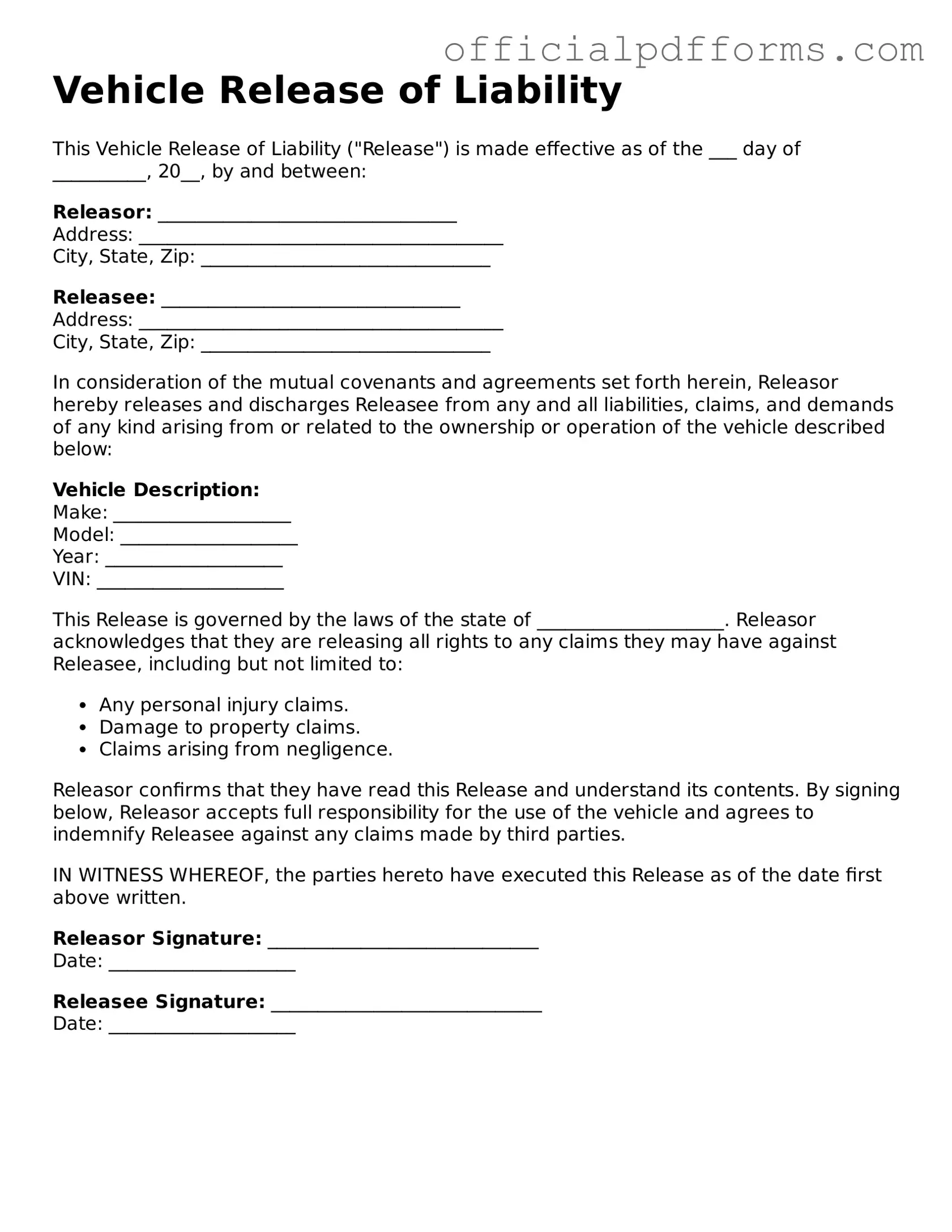The Vehicle Release of Liability form is a legal document that protects the seller of a vehicle from future claims or liabilities after the sale. By signing this form, the seller relinquishes any responsibility for the vehicle once it has been transferred to the new owner. This ensures that the seller is not held accountable for any incidents or accidents involving the vehicle after the sale is completed.
Using a Vehicle Release of Liability form is crucial for several reasons:
-
It provides legal protection for the seller against claims that may arise after the sale.
-
It serves as a record of the transaction, documenting the transfer of ownership.
-
It helps clarify the responsibilities of both the buyer and seller, reducing potential disputes.
Both the seller and the buyer should complete the Vehicle Release of Liability form. The seller needs to ensure that they are released from any future liabilities, while the buyer should acknowledge the acceptance of the vehicle and its condition at the time of sale. This mutual agreement helps protect both parties involved in the transaction.
The Vehicle Release of Liability form should be signed at the time of the vehicle sale. It is best practice to complete the form before or at the same time as the transfer of payment and ownership. This ensures that all parties are clear about their rights and responsibilities from the very beginning of the transaction.
A Vehicle Release of Liability form usually contains the following information:
-
The names and addresses of both the seller and the buyer.
-
The vehicle identification number (VIN) and details about the vehicle, such as make, model, and year.
-
The date of the sale.
-
A statement releasing the seller from liability.
-
Signatures of both parties to confirm the agreement.
Yes, once both parties sign the Vehicle Release of Liability form, it becomes a legally binding document. This means that both the seller and the buyer are expected to adhere to the terms outlined in the form. However, it is important to ensure that the form is filled out correctly and all necessary information is included to uphold its validity.
You can obtain a Vehicle Release of Liability form from various sources, including:
-
State Department of Motor Vehicles (DMV) websites, which often provide downloadable forms.
-
Legal document preparation services that offer customizable templates.
-
Local auto dealerships or legal offices that may provide copies.
If you choose not to use a Vehicle Release of Liability form, you may expose yourself to potential risks. Without this document, the seller could be held liable for any accidents or issues that arise after the sale. This could lead to legal disputes, financial loss, or complications in the transfer of ownership. To protect yourself, it is always advisable to complete this form during the sale process.
